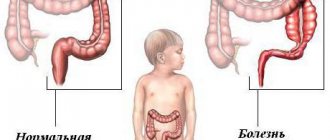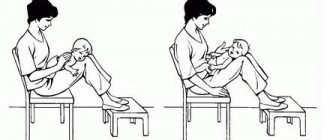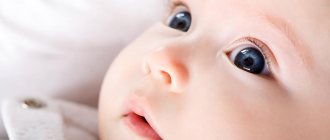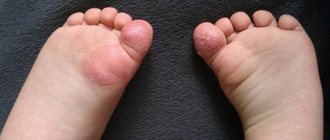345
230
The sea has a beneficial effect on the human body, increases immune defense and strengthens. However, the joy of being on the sea coast can spoil the acclimatization process - not everyone goes well. Sometimes acclimatization in children at sea ends in overheating, elevated temperature and ruined vacation. How to avoid troubles and facilitate adaptation to new climatic conditions? Let's look at it in the article.
The benefits of the sea for children
Coming to the sea improves human health. Doctors have found that the composition of sea water is as close as possible to the composition of human blood. Salts and minerals of sea water are quickly absorbed into the body through the pores and have a beneficial effect on all organs and systems of the body:
- iodine helps normalize metabolic processes;
- potassium strengthens the cardiovascular system;
- calcium structures bone tissue;
- magnesium strengthens the immune system;
- bromine calms the nervous system.
In addition to the above, how is the sea beneficial for children? Sea water helps remove toxins from the body and activates all life processes. Positive emotions and a lot of pleasant sensations are an additional bonus from swimming in sea water.
Features of children's immunity under climate change
The main mistake parents make when planning a vacation with their children is choosing exotic regions whose climate is significantly different from their usual one.
A place for a vacation with a child should be chosen within your latitude, and the Mediterranean climate zone is perfect for this.
Another mistake parents make is the habit of rushing. But this is unusual for a child’s body. The child undergoes acclimatization in about 12 - 16 days, while vacation usually lasts about 10 - 12 days. As a result, as soon as the child begins to adapt to new climatic conditions, he returns home, and then the process of reverse acclimatization begins.
In this regard, do not be surprised by the atypical pneumonia, flu and bronchitis that await the child after the vacation. This trip does more damage than good, so the vacation should be planned for at least three weeks.
There is a principle: the further you take the child, the longer acclimatization takes. Therefore, it is very important that you choose a nearby area for a holiday with small children.
The train is considered an excellent transport for traveling with children. An airplane is a very strong load for a child’s body, since it crosses various climatic zones within a short period of time, and it is very difficult for the body to withstand this. Traveling by train promotes gradual adaptation to a new climate.
On the first day of arrival, swimming in the sea is not recommended for the baby; it is better to wait a day or two until the child adapts to the different air and other conditions. Take a walk with your child throughout the territory, go around the surrounding area.
Causes and features of acclimatization in children
Acclimatization is a natural process of adaptation of the body to new climatic conditions. The body is forced to “adjust” to non-native time zones, to the length of daylight hours, to the temperature environment, to the level of humidity. The simplest and most obvious example is the time of getting up and the time of going to bed. It takes at least a few days to calibrate this watch under new conditions.
Climate change does not always go well for an adult. Some people simply don’t leave their room for a day or two. The further a person flies from home, the more difficult it is for the body to readjust.
Children tolerate acclimatization worse than adults. It is very difficult for a child’s body to quickly adapt, so it begins to react with an increase in temperature and health problems. Another country means a different composition of water, microorganisms alien to the body, and unusual food products.
How does acclimatization proceed in children of different ages? Infants go through the process relatively easily - they have stable nutrition (breast milk) and an established sleep rhythm. Much depends on the mother - how comfortable and calm she is. After all, at this age the bond between baby and mother is strongest.
The most difficult time is for children from two to four or five years old. A child may be upset because of an unusual environment: there is no familiar room, instead of a street with cars and houses there is a beach and many umbrellas. A psychological factor can provoke a physical illness.
On a note!
Pediatricians do not recommend taking young children far from home, and especially to a “contrasting” climate. For example, in winter you should not fly from Siberia with a small child to a country with a hot, humid climate, or to a country with a hot desert.
Preschool and older children suffer less from a change in environment, but they need to be prepared for flying to a country with a different climate.
Keep in mind that acclimatization will be more difficult for a child of any age if he has chronic diseases. Climate change can trigger exacerbations.
Peculiarities of manifestation in children of different ages
The more pronounced the contrast between the climate at home and on vacation, and the younger your child, the brighter and longer all manifestations will be. Infants who feed on mother's milk adapt relatively easily. They are helped in this by protective antibodies, as well as the constant availability of adequate and unchanged nutrition. There may be problems with the regime, but they are eliminated in 4-5 days.
It is more difficult for older children; a child of early and preschool age gets used to a new environment in a week, younger schoolchildren need 3-5 days.
Signs and symptoms of acclimatization at sea
What are the signs of acclimatization in children? The first symptoms begin to appear on the second day after arrival. They are expressed as follows:
- elevated temperature;
- lethargy;
- eating disorders, vomiting;
- symptoms of respiratory disease;
- behavioral disorder, moodiness;
- sleep disturbance.
Acclimatization in children under one year old begins with a change in behavior; it is impossible not to notice. The baby either becomes indifferent and lethargic, or anxious and capricious. He loses his appetite and sleep. If there were chronic diseases, they immediately worsen. Therefore, you should put the medications your child takes in your travel first aid kit.
Getting used to a new environment takes place in 4 stages:
The child behaves normally during the first 24 hours upon arrival in the south;
On the second to fourth day, the child’s condition begins to change - whims, lethargy, increased body temperature;
On the fifth or sixth day the condition improves;
On the seventh day, the body is completely adapted to the new conditions.
However, acclimatization in a child depends on the individual characteristics of the body and may differ from the stages considered.
How to speed up and facilitate acclimatization in a child: advice from pediatricians
Acclimatization is not as scary as parents make it out to be. As already mentioned, the adaptation period largely depends on the state of the immune system. While it is difficult to predict the body’s reaction to climate change in infants, older children can and should be properly prepared. Following simple, clear rules will help facilitate and speed up acclimatization:
- It is recommended to start traveling from short distances without sudden temperature changes;
- For your first travels, places where the climate is not very different from the usual and there are no sharp winter/summer changes are suitable;
- follow the usual daily routine, gradually transfer the child to a new schedule two to three weeks before the intended trip;
- if a child is prone to infectious diseases, choose uncrowded resorts and cool countries;
- travel with absolutely healthy children: even minor signs of illness are a reason to cancel the trip;
- feed your child familiar foods, especially in the first three to five days of staying at the resort;
- stock up on bottled water of the usual composition: take it from home or buy a familiar brand;
- plan your flight at a convenient time: preferably in the afternoon or evening, so that after arrival you have the opportunity to fully relax;
- a month before the trip, take a course of vitamins, consult a pediatrician about maintaining your baby’s immunity;
- at the beginning of your rest, eliminate any stress, stressful situations and strong feelings. Postpone visits to children's clubs, excursions, and amusement parks for the second half of your vacation;
- do not force the child to eat and sleep;
- In the first days of your stay at sea, limit the time of swimming and sunbathing. Always spend the period of active sun in your room or in the shade outdoors.
And one more important rule: a vacation in a different climate should last at least two to three weeks. During this period, the body of children and adults has time to get used to new conditions and get the maximum benefit. Staying at a resort for seven to ten days not only does not give the desired result, but also puts an increased burden on the immune system.
Duration of acclimatization
How long does it take for children to acclimatize at sea? This depends on three factors:
- how far the child was taken from home;
- how old is the baby;
- health status.
If for schoolchildren this process can be successfully completed in 2-3 days (less often - in a week), then for children adaptation can take a couple of weeks. To roughly know what to expect from a flight, you can use the formula: one time zone equals one additional day of adaptation. That is, if a child has crossed 2 time zones, then it will take him: 7 +2 = 9 days to get used to new conditions.
On a note!
If you have already been to any resort with your child, then re-acclimatization will be much easier.
Know acclimatization by sight
Let's define the terms.
Acclimatization is the process by which our body adapts to new living conditions.
So, for example, when a person enters a country with a hot climate, the cardiovascular system, kidneys, sweat glands, and blood vessels rearrange their work. Our heart rate increases, the stroke volume of the heart decreases, the amount of urine and salt in the urine decreases, sweating increases, and other processes occur. All of them ultimately lead to reduced fluid loss and cooling.
In the cold, everything is different: the body breaks down fats and contracts muscles to produce heat. Heat loss becomes lower due to the narrowing of superficial vessels. And in high altitude conditions, a person first of all lacks oxygen. In this situation, the hemoglobin content in the blood becomes higher, which makes it possible to more actively supply tissues with oxygen.
#IMPORTANT
All living nature goes through several phases of acclimatization. Its most acute form does not occur immediately, but, as a rule, 2-3 days after changing place of residence. At this time, children sometimes suddenly begin to feel worse.
Signs of acclimatization can occur not only when moving to hot countries, but also when changing from a warm climate to a cold one,
explained Karina Saidova, pediatrician, osteopath, member of the Russian Osteopathic Association.
So, your child is most likely acclimating if:
- the malaise began within 24-48 hours after the climate change, although before arrival he felt absolutely healthy;
- the child feels weak, apathetic, has lost his appetite;
- he developed a runny nose, sore throat and headache;
- and increased temperature, sweating and chills;
- symptoms from the gastrointestinal tract appeared - nausea and vomiting.
- the baby has become capricious and whiny because he feels unwell, which he often cannot express in words.
When a child suddenly faces health problems away from home, parents often begin to panic and feel powerless. Many people wonder: is the child’s body undergoing normal acclimatization or did the baby manage to catch an infection in a foreign country and get sick?
We immediately turned to several pediatricians for answers.
Pediatrician and author of courses for young parents Polina Kizino stated: every child tolerates changes in climate and place of life differently. For some, acclimatization takes 7-10 days, while for others it goes unnoticed.
#SIGNS
The main difference is the suddenness of the onset of symptoms: “Acclimatization occurs sharply and early - literally on the second day.”
Our body begins to rebuild, adapting to new loads.
Manifestations of acclimatization occur without an increase in symptoms, as with an illness. If in adults acclimatization includes nausea, changes in blood pressure, headache, then in children it is more often lethargy, sleep disturbance (due to a different time zone and the consequences of the flight), runny nose (the nasal mucosa adapts to different humidity and environmental temperature) , vomiting and diarrhea (adjustment to new food, irritability), commented Albina Yusupova, a pediatrician and neonatologist at the Lakhta Junior Clinic.
It is very important to understand how acclimatization differs from illness.
First of all, acclimatization with pronounced manifestations that resemble the onset of various diseases occurs in the body if the conditions in which a person finds himself are very different from his usual living conditions. For example, if you went to a country that is located in a different climate zone, or is very high or low relative to sea level. The second important point is the duration of symptoms. Acclimatization most often takes from 3 to 7 days. If during this time the unpleasant symptoms do not go away or decrease, seek medical help. And third, in any case and at any time with pronounced manifestations: vomiting or diarrhea more than 3 times a day, an increase in body temperature more than 38.5 C, chest pain, a significant rise or fall in blood pressure, severe headaches, you must immediately contact for medical help! Most likely, this is an acute disease or an exacerbation of an existing chronic disease, ” explains pediatrician, family doctor Larisa Grebenyuk.
Elena Pisareva, a pediatrician at the Ministry of Emergency Situations Clinic No. 157, encourages parents to also carefully monitor the child’s condition and trust their intuition. After all, according to her, healthy children tolerate acclimatization quite easily. On vacation, they are interested in everything, and they rarely pay attention to poor health.
When a child lies flat and is not distracted by play and entertainment, you should consult a doctor,
says Elena.
How to make acclimatization at sea easier
If a child comes on vacation to a new climate zone, a number of precautions must be observed:
- feed only familiar foods (you can bring some of the food with you);
- drink only bottled water, brush your teeth with the same water;
- limit the consumption of exotic fruits at least in the first days;
- at first, do not sunbathe all day on the beach;
- follow the daily routine.
If you sent a schoolchild to a summer camp at sea, instruct him how to properly prevent and alleviate acclimatization symptoms.
Watch a video about traveling with a child, where Dr. Komarovsky talks about the peculiarities of adaptation of a child’s body to new conditions.
How to avoid acclimatization
There are several tips on how to avoid problems or make them less pronounced.
If possible, maintain approximately the same routine as at home (getting up, eating, sleeping). If you are planning a trip to a different time zone, you need to start switching to a new regime at home, 1.5-2 months before the trip. Every 2-3 days you need to change the schedule by 15 minutes.
It is important to ensure adequate drinking regime. It is advisable to drink your usual bottled water to exclude infections and changes in metabolism due to the different chemical composition of the water.
On the first day after arrival, you do not need to go to the beach. Give your baby time to rest, sleep and adapt to the climate. It is better to go to the beach on the 3-4th day, and swim for no more than 15 minutes the first time. To treat possible colds or digestive disorders, you should carry a first aid kit with the necessary medications to help you at home.>
Prevention
Preparing the body for a sudden climate change is not an easy task. Therefore, you need to plan a trip with your baby thoughtfully and carefully so as not to spoil your vacation.
Adviсe:
- choose a country with the same time zone as yours for your trip (+ - one hour);
- plan a vacation only in the summer: a sharp change in season has a negative impact on the child’s well-being;
- it is better to travel by train, bus or car than to fly by plane: there is a smooth change in the external environment;
- plan to spend at least two weeks on vacation with your baby so as not to burden your body with sudden changes in climatic conditions;
- Before traveling, take a course of vitamins, having previously discussed with your pediatrician the choice of multivitamin complexes and the duration of the course.
To prevent acclimatization symptoms in children, you need to gradually move up your meal and sleep times to smoothly prepare the body for the new time zone.
What is acclimatization
A large explanatory dictionary of the Russian language gives the following definition: acclimatization is the adaptation of the body to new climatic and other natural conditions.
Doctors prefer to talk not about acclimatization, but about acclimatization syndrome - a general deterioration in well-being and an increased susceptibility to illness due to climate change.”
A child may encounter malaise, indigestion, and fever while on vacation. A different climate zone means a different altitude above sea level, atmospheric pressure, air temperature, and humidity. Another country means a different cuisine, different products, different water.
Accordingly, new demands are placed on the nervous, respiratory, cardiovascular, and digestive systems. The body of a child, and an adult too, needs time to get used to new conditions.
The psychological factor also plays a role in the acclimatization of young children: instead of a familiar apartment, the child sees a hotel room, instead of a densely built-up street - a beach and sea to the very horizon.
The baby begins to worry and be capricious, and it will take several days for him to settle down in the new place.
If you're already feeling anxious, it's time to calm down because acclimatization is beneficial. Moderate stress on the body acts as a hardening, training the ability to adapt to different conditions.
Sun protection
First of all, remember to take precautions to prevent overheating and sunburn. To prevent trouble, we recommend following simple rules:
- dress your child in light natural fabrics and don’t forget about hats;
- Avoid being in the sun during periods of strong solar activity from 11:00 to 16:00;
- Gradually increase your time in the sun during “safe” hours and don’t rush to the beach on the first day of your vacation;
- Make sure your child drinks plenty of fluids on a regular basis;
- Bring sunscreen to protect your child from sunburn.
If your skin and eyes are light, you need My Sun ® cream with SPF 50+ protection. If the child is dark-skinned, with dark hair and brown eyes, you can take cream or spray My Sun ® SPF 30. And after a week at the seaside or at the dacha, SPF 20 protection is also suitable. The products in this sun protection series include safe SPF filters and natural herbal ingredients and vitamin E, which carefully protect delicate baby skin from harmful UV radiation. Sunscreens and sprays have undergone additional clinical testing in the laboratory of BASF Germany, which confirmed the effectiveness of SPF/UVA.
On a note!
Stock up on several tubes of cream, because by applying the product in a thin layer, you reduce the degree of protection. SPF is calculated based on the consumption of 20 grams of product per 1 square meter of skin surface.
Let's remember an important fact:
For effective protection, the child’s skin should be covered with such a layer of cream that there are no gaps or poorly treated areas. You need to apply a sufficient amount of cream. If you use a spray, apply it several times to create a thick coating on the skin.
To ensure complete protection of the baby throughout the day, taking into account constant swimming in the sea, you will need a tube of the product (apply 10 grams to the entire two-year-old baby 5 times in one day = 50 ml).
Eating on the beach
- Go out to sea no earlier than half an hour to an hour after eating;
- One of the main safety precautions at the beach is to avoid dehydration. In the sun, the body quickly loses water. Give your child water often. Make sure you have non-carbonated drinking water available. You can take juices;
- Porridge, soups, and dairy products quickly spoil in the heat - be sure to place them in a cooler bag;
- For a snack, it is better to take bread, cookies, vegetables and fruits: cucumbers, tomatoes, bananas, apples, pears. Juicy fruits: apples, peaches, watermelons are good for replenishing fluid lost through sweat;
- Never buy food on the beach, in stalls or from hawkers. It is often prepared and stored without sanitary standards;
- Stock up on water for rinsing food and washing hands.
- While swimming, make sure that your child does not swallow sea water or lick stones or toys that have been in the water.
Blacklist of beach snacks.
Remember, write down and pass on! These products are especially dangerous and undesirable for consumption, which are purchased second-hand on the beaches :
- Baklava is a heavy and fatty dish. The dangerous thing is that its manufacturers do not change the frying oil regularly. Imagine how many carcinogens there are?
- Dried bulls and rams are likely to become infected with helminths if the fish is under-dried or under-dried, which may very well be the case in conditions of high demand for it.
- Shrimp and mussels are a very healthy product, but even if its quality meets the standards, out of habit the body may react with upset. If we assume that the conditions for the production and storage of such a snack are not always treated properly, then there are risks of serious poisoning.
- Tubes with cream or condensed milk . Even if they were prepared according to all the rules, they must be stored in the cold. Instead, they are placed in containers and carried to the beach. Children are especially happy with this delicacy, but think about whether you want their taste of childhood to be spoiled by terrible poisoning. After all, just a few hours on the road to the beach is enough for a tube of cream in “caring” hands to turn into poison.
- Pies with jam and fresh berries . Although the pastry is not a cake, its filling makes you think. Sweet baked goods are often a habitat for staphylococcus and salmonella, especially since they are not produced and stored in the cleanest conditions.
- Boiled corn . If it is poorly cooked or poorly chewed, then there is a danger of plugging in the stomach, which can lead to a slowdown in the gastrointestinal tract.
- Nuts . There is no discussion about spoilage here, but this heavy food contains a lot of oils, it is hard and fatty, causing intestinal obstruction, especially in children.
- Lollipops and caramels may contain non-food dyes, which can subsequently result in poisoning.
- Chocolate Even if it is extra dark, it will not be suitable as a snack on the beach. This is a heavy fatty food, which in large quantities enhances oxidative processes in the body. This is fraught with metabolic disorders, and, as a result, excess weight. In addition, chocolate prevents tanning.
- Beer and stronger spirits . They are not allowed to be consumed on the beach. If you really want to relax in this way, then allow yourself alcohol during lunch under a thick tent or at dinner, but not in the sun on the eve of swimming.
But, of course, this does not mean that you need to be hungry on the beach. As you know, you always want to eat more near water. But for snacks it is better to choose those products that are not afraid of the influence of the sun and heat. You can take with you washed fresh vegetables and fruits, berries and baked goods without filling, crackers, homemade sandwiches without meat and mayonnaise. As for drinks, it is better to give preference to ordinary water rather than juices. This is especially true when you have children with you. Be careful, we are what we eat!
Acclimatization is an integral process for any person during climate change, including a child. Most often, signs of changes in the baby’s body appear 3-4 days after arrival. The temperature may rise and diarrhea may appear. In order to minimize the manifestations of acclimatization in your baby, gradually accustom him to the sea and sun in the first few days. For 1-2 days it is better to refrain from swimming in the sea and limit yourself to the pool. Try to come to the beach early, around eight in the morning. At this time, the sea is surprisingly calm and almost deserted. The best time for a child is from 8 to 11 am and after 5 pm.
Sunbathing.
The main rule for relaxing with a small child is moderation in everything. Unlike adults, children do not have their own protection from ultraviolet radiation. After all, tanning is nothing more than the body’s protective reaction to solar radiation. Where have you seen babies covered with an even chocolate tan? The thing is that the child’s skin weakly produces the pigment melanin, which provides a tan. This defense mechanism is fully formed in the body only by the age of three. To ensure that your child returns rested and stronger, remember: you can only be on the beach until eleven in the morning and after five in the evening , and even at this time you must use sunscreen. Cosmetics for your baby are a must on vacation. Let's divide them into two groups: skin care products and sunscreens. The first are those tools that you use in everyday life. By the way, it is highly not recommended to change them on vacation. Let us remind you that children's cosmetics must be made from high-quality natural raw materials of plant origin, ensuring complete cleansing, moisturizing, protecting and nourishing delicate children's skin. On vacation you cannot do without cleansing wet wipes; when choosing them, you need to pay attention that they are alcohol-free, with a neutral pH, bleached without chlorine and on a non-woven basis, they can also be oiled.
As for sunscreens , we must take into account that they must have a high protection factor (20 or more). Western doctors insist that the habit of using sunscreen should be instilled in children from a very early age. This is as important as brushing your teeth and washing your hands before eating. Do I need to purchase a special baby cream or can I limit myself to one tube for the whole family? The choice is definitely in favor of baby creams. They are perfectly adapted to the child’s body and do not contain dyes or additives. In addition, these products should contain panthenol and tocopherol , which will protect the skin, as well as plant extracts (for example, aloe) and vegetable oils to naturally and significantly moisturize baby's delicate skin. When choosing children's cosmetics, we must remember that they must be safe, hypoallergenic, effective, and natural.
Extremely undesirable components are mineral oil, proteins (collagen, elastin), raw materials of animal origin (lanolin is a common source of allergies). Dermatologists prohibit children under one year from being in the open rays of the sun.
In addition to creams, clothing can also protect against sun radiation, but not all clothes. Some types of fabrics, in particular synthetic ones, transmit from 20 to 50% of ultraviolet radiation. For example, white nylon knitted fabric transmits 25% of the radiation incident on it, blue - 13%. But natural fabrics transmit no more than 1% of radiation. Therefore, if your child is very sensitive to the sun, you can take him for a walk on the beach, wearing loose clothes made from natural material.
Another vulnerable spot is the eyes. Adults can protect them from the bright sun by wearing sunglasses. What about a small child? There are dark glasses for kids too. Made in the shape of funny animals, such glasses are perceived by a child as a toy, and most likely your baby will not refuse to wear them on the beach. If the child is capricious and flatly refuses glasses, just put a panama hat with a wide brim on him. By the way, a Panama hat will also protect your child’s hair from the sun.
When swimming in the sea, you also need to take certain precautions. In the first couple of days, it is better not to completely immerse the baby in water. Walk along the water's edge, wet your feet, and give your child the opportunity to get used to the sea. After swimming in the salty sea, the child should be washed in fresh water, rinsed off the salt and wiped dry. Remember, a wet child should not run along the beach. Droplets of water and salt crystals act like little lines that enhance the effect of the sun, and this can lead to severe burns.
When you return home from the beach, give your child a bath with a mild bathing product and after the bath, apply a special after-sun lotion rich in moisturizing and skin-protecting plant ingredients to your baby's skin. This will help cleanse the skin of salt, sand, algae, moisturize and soothe skin “tired” from tanning.
One of the possible negative ways of affecting the skin is insect bites. Bite areas must be treated with a special protective cream containing tocopherol and panthenol, which will relieve redness, swelling and soothe itching. Pets can also cause anxiety for a child. Long-term active games in the air with cats and dogs, contact with fur can not only cause increased skin contamination, but also contribute to skin irritation, allergic reactions, abrasions and bruises. Abrasions and bruises must be treated with disinfectants and then apply a baby cream or balm, which will speed up the skin healing process and prevent pathogens from entering the body.
Reacclimatization
Returning home from vacation does not always go well for little travelers. Reacclimatization in children is also a natural defense mechanism of the body. A day or two after arriving home, the child’s temperature may rise and symptoms of ARVI may appear. Some parents think that somewhere along the way the baby became infected. But this is not true, it is simply possible that symptoms of acclimatization may recur after the holidays.
Symptoms of over-acclimatization in a child:
- behavior change, lethargy, or moodiness;
- obvious symptoms of a cold - sore throat, runny nose, cough;
- sometimes the temperature rises;
- signs of gastrointestinal distress appear;
- sleep is disturbed.
It is important to understand that in this case, treatment for a cold does not always help: the child needs rest and peace. In this condition, the child cannot be taken to kindergarten or school. You should also avoid routine vaccinations: explain to your pediatrician that you were on vacation at sea. The child’s body has received a big shock, and it will not be able to withstand the additional load in the form of a vaccine. As a parent, you have the right to temporarily refuse vaccinations.
How to treat a runny nose in children when traveling to the sea?
Even if acclimatization goes smoothly, in the first days, especially after swimming, the child may develop a runny nose.
It is called reflex: this is how the nasal mucosa reacts to higher air humidity, temperature changes, and water with a high salt content. This runny nose is not accompanied by a cough or fever, since it is not a symptom of the disease. However, you should not ignore a reflex runny nose: firstly, with a stuffy nose, it is difficult for a child to breathe and eat, and secondly, the accumulation of mucus in the nose is the most suitable environment for the proliferation of pathogenic bacteria. To make breathing easier in this case, you should not use vasoconstrictor drops - they dry out and irritate the mucous membrane. It is better to use products that help to gently relieve swelling of the mucous membrane, for example, the Breathe® inhaler patch based on essential oils (more information about the product can be found here). It is glued to the T-shirt or blanket the child is on. By evaporating, essential oils reduce swelling of the mucous membrane and normalize its condition. In addition, essential oils destroy respiratory viruses and bacteria, preventing the child from getting sick.
Treatment
There is no need for acclimatization treatment:
treat symptoms. At this moment, you should give the body a rest, and it will cope with the task itself. Do not take your child outside in the heat, do not force him to eat if he has no appetite, and do not punish him for capricious behavior. An adult must understand that it is difficult for children to adapt due to the imperfection of the immune system. Everything will work out if you treat your child’s problem with understanding and patience.
Many travelers get vaccinated before traveling to exotic countries to avoid contracting tropical diseases. You cannot vaccinate your child immediately before departure: the body must cope with the vaccine. Ask your immunologist how long after vaccination you can fly to hot countries.










